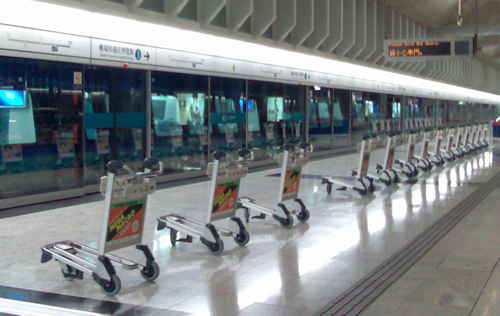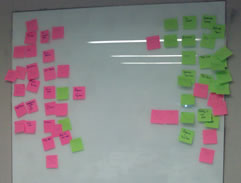There once was a time that international development was all about big capital projects, building dams and the likes. Times change, now the focus is on eliminating poverty; DFID “focus [their] aid on the poorest countries and those most in need”. There is a realisation that those big projects did very little to address poverty, indeed they kept countries poor forcing them into debt (read Confessions of an Economic Hit Man for a cynical view of this). And besides, dam projects are rarely successful and before you know it they silt up.
A focus on reducing poverty requires a new approach. It requires an understanding of the root problems, it means spending time with the poor to understand their circumstances to be able to create appropriate and sustainable solutions rather than prescribed programmes that develop and maintain a dependency culture.
There are parallels here with the IT industry. Much of the IT game remains focussed upon those big projects. Software dams that can be launched with great fanfare but do little sustainable good to those most in need. The customer.
Before I wound up in IT I worked in international development. My PhD. “Ergonomics tool and methods for use in Industrially Developing Countries” was based on working with farmers in Sub Saharan Africa, looking at how technology is transferred and how it can be made more appropriate, sustainable and usable. Many of the tools and techniques I used in the bush I apply with the corporations I work with today. These came under the umbrella of “Participatory Technology Development” and “Participatory Rural Appraisal”.
Rather than the delivering the white elephants of expensive machinery that you see littered around Africa, Participatory Technology Development is an approach for developing simple low cost innovative solutions that have the ownership of the community who work with researchers to build them. The PTD framework starts with gaining a shared understanding problems and opportunities. This is followed by defining priority problems then experimentation. Experimentation is collaborative with options derived from indigenous knowledge and support from the researchers experience and expertise. The farmers own the experiments and the results. This leads to the next step of the framework; sharing the results with farmer led extension. (Traditionally dissemination of agricultural advice is done by agricultural extension officers – government employees who despite their best intentions preach too the farmers, sharing centrally defined agricultural advice rather than the more appropriate, locally developed technologies that the farming community have developed themselves). The final step to the process is the researchers withdrawing, leaving the community with the capacity to continue the process of change.
(Sounding like agile?)
If PTD is a framework, then PRA is a basket of tools and techniques that can be used to support it. These can be broken down into nine categories:
- Secondary data reviews – reviewing existing sources of information
- Workshops – getting key stakeholders round the table (or more appropriately under the banyan tree)
- Semi-structured interviewing – talking to people with a loose conversation direction
- Ranking and classification techniques – identifying “things” and ordering them according to different criteria. (Often this will involve moving pebbles around boxes drawn in the sand).
- Diagramming, illustrations and graphics – pictures to convey ideas and concepts, through “boxes and arrows”, Venn diagrams and charting to cartoons and imagery
- Mapping – drawings or models that represent the local environment
- Structured observation – watching people doing
- Timelines – What happens when, for example seasonal calendars, a line in the sand and people put pebbles down against the time to show when crops are sown, harvested, how the price fluctuates, labour migration etc.
- Community meetings – meeting the whole community rather than just the immediate stakeholders who participate in stakeholders. Showcases?
Are you building a Software Dam? Or are you focussing your aid on those most in need? PTD and PRA are approaches that have developed to help introduce appropriate, sustainable improvements to the life and wellbeing of subsistence farmers. Much of their content can be transferred to IT projects, helping introduce appropriate, sustainable improvements to the life and wellbeing of customers / users.





